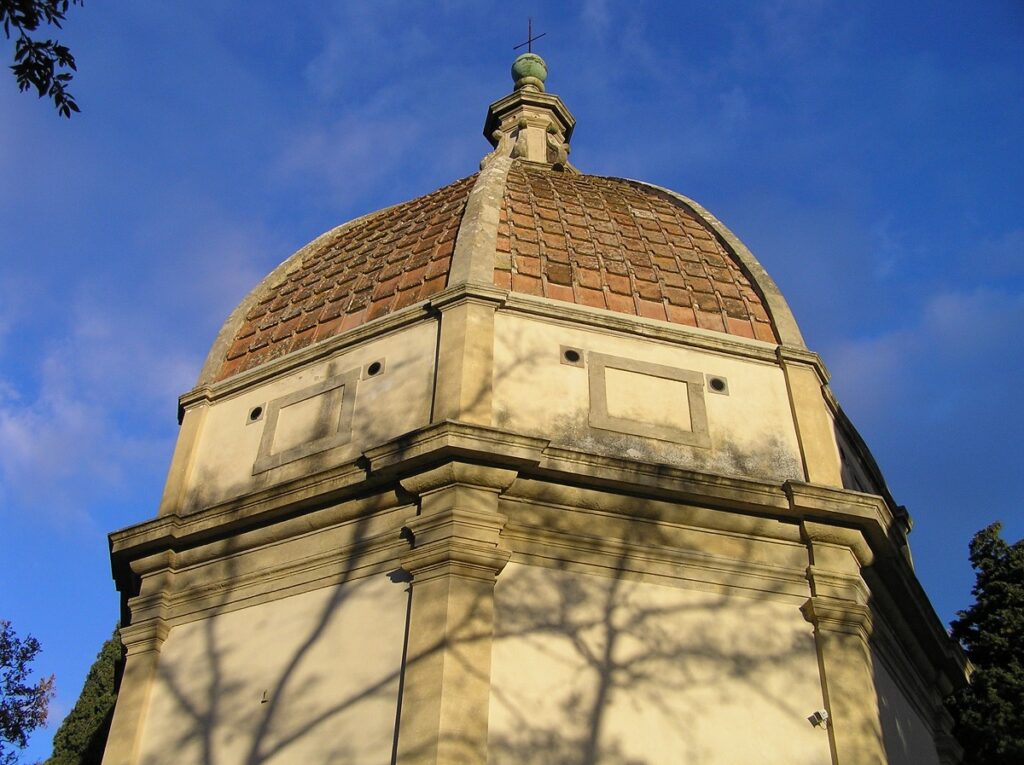Questo articolo è disponibile anche in:
![]() Français
Français ![]() Deutsch
Deutsch ![]() Español
Español ![]() Italiano
Italiano
This dome is a 1:8 scale reproduction of the dome of the Florence Cathedral
In the countryside around Barberino Val d’Elsa there are some interesting medieval villages, such as those of Tignano and Linari, and religious buildings, such as those of the Pieve di Sant’Appiano and the chapel of San Donnino. On this page we will write about the chapel of San Donnino. This small chapel is located along the road that connects Barberino Val d’Elsa with Certaldo, just 5 km from the medieval village of Barberino Val d’Elsa. Coming from Barberino, in the direction of Certaldo, you pass the village of Petrognano and after about 1 km you come across this simple chapel surmounted by a beautiful dome.

THE ANCIENT SEMIFONTE
According to recent studies, the keep of the ancient city of Semifonte, the Rocca di Capo Bagnolo, once stood in the area where the dome of San Donnino stands today. This city, an imperial outpost located on the borders of the territory of the Republic of Florence, was founded between 1177 and 1181 as a fortress of the Alberti family. Semifonte was conquered and razed to the ground by the Florentines in the spring of 1202. After its destruction, the Republic of Florence forbade the construction of any type of building in the area where Semifonte stood.
The chapel, dedicated to San Michele Arcangelo, was designed by Santi di Tito and was built between 1594 and 1597. This chapel, which has an octagonal plan structure, is famous for being surmounted by a dome which is the scale reproduction 1:8 (but according to Bruno Rinaldi it is on a scale of 1:5.5) of Brunelleschi’s dome of the Cathedral of Santa Maria del Fiore in Florence. The financier of the work was Giovan Battista di Neri Capponi. In order to build the chapel, he had to ask Grand Duke Ferdinando I for a special permit. Because the ban on building any type of construction in the area of the city of Semifonte was still in force 400 years after the destruction of the city.
Written by Marco Ramerini
Questo articolo è disponibile anche in:
![]() Français
Français ![]() Deutsch
Deutsch ![]() Español
Español ![]() Italiano
Italiano
